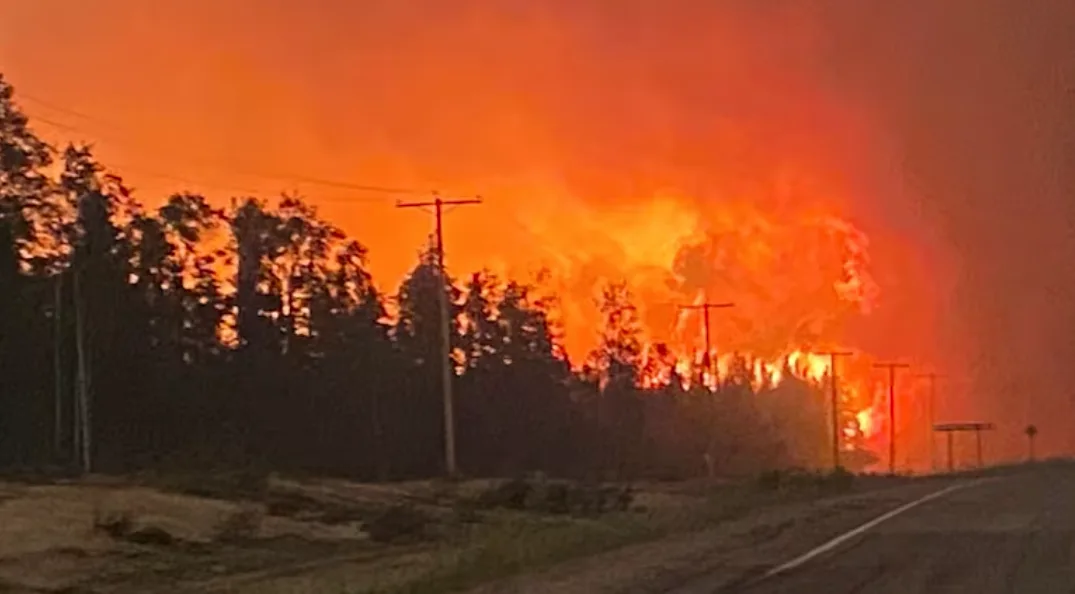
Canadian Armed Forces firefighting crews to arrive in Sask. by Saturday
Roughly 300 personnel from the Canadian Armed Forces are set to arrive in the province by Saturday to assist with wildfire operations, Saskatchewan's Public Safety Agency has confirmed.
During a provincial update on Thursday, Saskatchewan Public Safety Agency (SPSA) President Marlo Pritchard said the Type 3 fire personnel will be deployed to a number of different fires across the province, freeing up Type 1 and Type 2 personnel for more serious fire areas.
"We understand they will be arriving within 36 to 48 hours," Pritchard said.
RELATED: Keep up to date with the Weather Network's wildfire hub
An advance team from the Armed Forces are already in Prince Albert planning where the contingent will be sent.
The news came shortly before the province issued a wildfire evacuation notice for Ramsey Bay Northern Resort Subdivision and Ramsey Bay Campground, which are on Weyakwin Lake, about 140 km north of Prince Albert.
A fast-moving wildfire is threatening the community and residents are being asked to start evacuating immediately.
The province says individuals who can self-evacuate and find their own accommodations should use Highway 2 and register with the province. Individuals who require accommodations are being directed to room 106 at the Days Inn in Prince Albert.
DON'T MISS: From flames to forecasts: How wildfire smoke affects your weather
More resources arriving soon
Public Safety Minister Tim McLeod formally requested assistance from the federal government on Wednesday.
Type 3 firefighters are hired on an emergency basis and generally work in less intense conditions, when a wildfire has already been contained or is under control, according to the SPSA. Type 2 fire crews provide firefighting and response services in Northern Communities or First Nations while Type 1 fire crews are trained and experienced staff familiar with wildland firefighting tactics.
Pritchard confirmed Canadian Armed Forces personnel would be used for with wildfire mop-up operations, related logistical support for the new fire crews, and helicopters for bucketing and crew movement.
McLeod had also requested water haulers to help with wildfire mop-up and fire mitigation and protection kits containing sprinklers and hoses to help protect structures in various communities.
Those are not going to be provided by the federal government, Pritchard confirmed. Federal Emergency Management Minister Eleanor Olszewski has confirmed helicopters are being sent along with the Armed Forces personnel.
WATCH: Wildfires continue to burn across the northern Prairies
The SPSA has faced criticism from wildfire-affected communities for not requesting federal assistance sooner. On Thursday, Pritchard defended that decision, saying it was about getting the "right resources at the right time."
"Over the last number of weeks we have seen significant work done by our Type 1s and Type 2s, we've seen cooler weather, so our fire activity is less," Pritchard said.
Those factors mean its now safe to deploy Type 3 fire crews, such as the incoming military personnel, Pritchard explained.
Along with the Armed Forces personnel, various countries and other Canadian provinces have provided Saskatchewan with Type 1 fire personnel and Type 2 fire personnel.
Pritchard said New Brunswick has recently deployed 22 Type 1 fire personnel to Saskatchewan.
They joined 41 firefighters from Mexico, 41 firefighters from Australia, 22 firefighters from Nova Scotia and 12 personnel from Ontario that were already in the province.
Pritchard said an additional 41 firefighters are expected from Quebec late on Thursday or on Friday.
Métis Nation-Saskatchewan welcomes federal support
On Wednesday, Métis Nation-Saskatchewan (MN-S) announced that it had declared a state of emergency in the province's northwest as a result of the wildfires.
Northern Region 3 includes Green Lake, Pinehouse, Île-à-la-Crosse, Beauval, Jans Bay, Cole Bay, Dore/Sled Lake, Patuanak, Canoe River, and Sapawgamik.
MN-S and its members are concerned about the province's response to the wildfires, Brennan Merasty, a regional representative for the MN-S region told CBC on Thursday.
Local leadership "would like to be invited to the space with the province to have a conversation on the approach, their methods and how do we bring our traditional knowledge to the forefront," Merasty said.
He also said that MN-S is ready to host evacuees in Batoche, Sask., a community much more familiar to evacuees than where they may be currently staying.
Merasty said they have hosted wildfire evacuees before and are capable of doing it again but need to have access to funding from the SPSA.
Merasty welcomed the news that federal assistance had been requested and will soon be deployed but said MN-S needs to be part of the conversation.
"The province can't do this alone, just like we can't as a Métis nation. We have to all come together, join forces, strengthen our position and do it together," Merasty said.
Pritchard said he had not met with MN-S officials recently but is "always" open to having those conversations."
State of wildfires in Saskatchewan
As of 2:30 p.m. CST, there are 10 communities in the province under an evacuation order. There are 55 active wildfires with five categorized as being contained, 14 not contained, 18 ongoing assessment and 18 protecting values.
The latest figures mean there have been 392 wildfires in Saskatchewan in this year to date. That's well above the five-year average of 319 to date.
Ten communities remain under evacuation at this point, with Pritchard confirming approximately 3,000 people remain evacuated at this time.
Approximately 1.8 million hectares of land in Saskatchewan has burned as a result of wildfires this year.
WATCH: Monitoring wildfire smoke levels at home has never been so accurate
This article, written by Alexander Quon, was originally published for CBC News